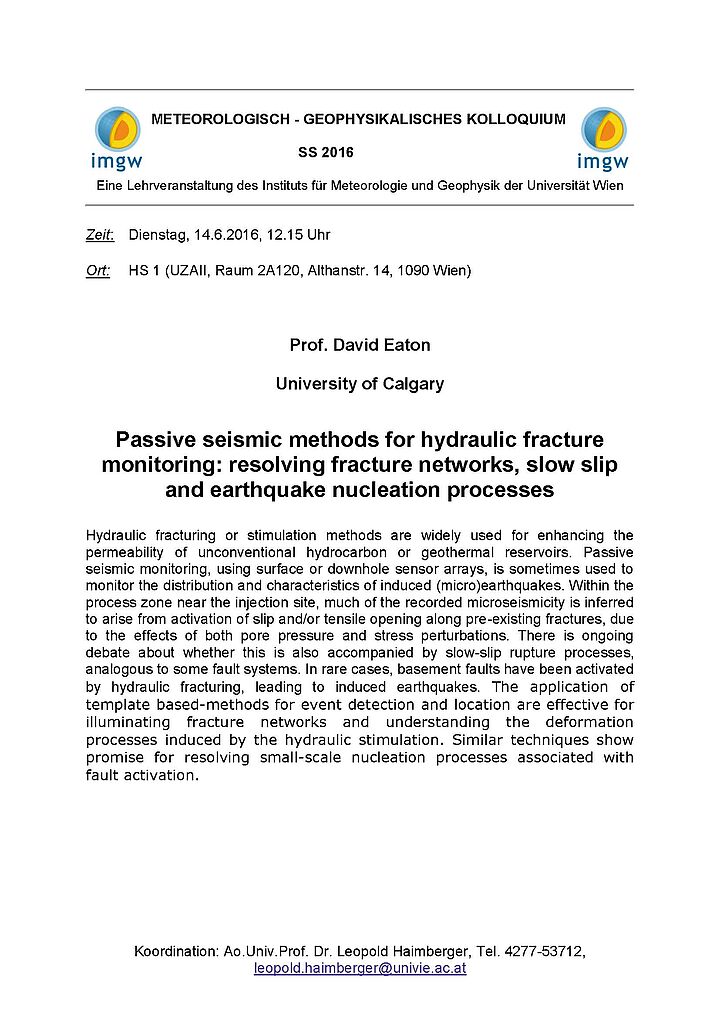Dienstag, 14. Juni 2016, 12:15 - 13:30 iCal
Meteorologisch-Geophysikalisches Kolloquium
Passive seismic methods for hydraulic fracture monitoring: resolving fracture networks, slow slip and earthquake nucleation processes
Hörsaal 1, Raum 2A120
Althanstr. 14, UZA 2, 1090 Wien
Vortrag
Hydraulic fracturing or stimulation methods are widely used for enhancing the permeability of unconventional hydrocarbon or geothermal reservoirs. Passive seismic monitoring, using surface or downhole sensor arrays, is sometimes used to monitor the distribution and characteristics of induced (micro)earthquakes. Within the process zone near the injection site, much of the recorded microseismicity is inferred to arise from activation of slip and/or tensile opening along pre-existing fractures, due to the effects of both pore pressure and stress perturbations. There is ongoing debate about whether this is also accompanied by slow-slip rupture processes, analogous to some fault systems. In rare cases, basement faults have been activated by hydraulic fracturing, leading to induced earthquakes. The application of template based-methods for event detection and location are effective for illuminating fracture networks and understanding the deformation processes induced by the hydraulic stimulation. Similar techniques show promise for resolving small-scale nucleation processes associated with fault activation.
Veranstalter
Institut für Meteorologie und Geophysik
Kontakt
Prof. Leopold Haimberger
Institut für Meteorologie und Geophysik
537 12
leopold.haimberger@univie.ac.at
Erstellt am Donnerstag, 19. Mai 2016, 11:04
Letzte Änderung am Donnerstag, 02. Juni 2016, 12:51

